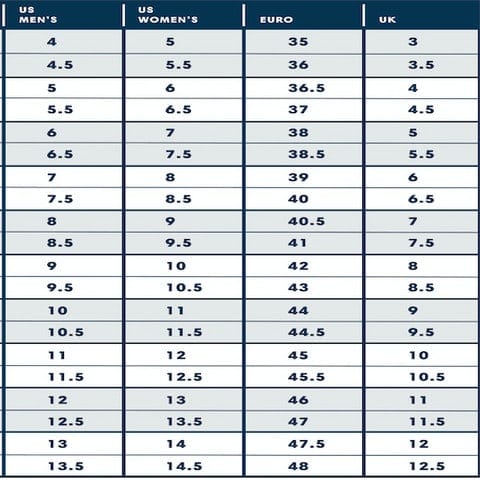Understanding AUS to US Size Conversion for Your Little Ones
G’day awesome parents! Are you scratching your head over what size to pick when shopping for cute kid’s clothes from overseas? Whether you’re swooning over stylish Australian brands or aiming to gift your relatives in the States, understanding clothing size conversion is super important. Don’t fret, mates! I’m here to sprinkle some delightful insights on how to effortlessly convert AUS sizes to US sizes for your kiddos.
Why AUS to US Size Charts Matter for Parents
Let’s face it, shopping for children’s clothing can be as tricky as herding kangaroos on a ranch. Sizes vary significantly between countries, and the last thing you want is to end up with an adorable outfit that is either too “teeny-weeny” or “huge as” for your little one. Getting to grips with AUS to US size conversion is like learning to throw a boomerang – a bit complex at first, but once you’ve got the hang of it, you’ll be hitting the mark every time!
Size Conversion Basics
Before we jump into the nitty-gritty, let’s talk about the basics of sizing. Australian sizes are generally based on your child’s age, but just like their American cousins, every child grows at their own pace. That means you might need a bit more information than just age to choose the correct size.
Together, we’ll explore how to measure your child and compare those measurements to both AUS and US sizing standards. This will ensure that you’re as pleased as punch with your overseas purchases every time!
How to Measure Your Child for Clothing
Roll up your sleeves, and let’s get started on measuring your little Aussie or future American superstar:
- Height: Have your child stand tall against a wall, sans shoes, and measure from the top of their head straight down to their feet.
- Chest: Measure around the broadest part of the chest, ensuring the tape is level and snug but not tight.
- Waist: Measure around their natural waistline – that’s right where their belly button is!
- Hips: Measure around the widest part of the hips, making sure the tape is parallel to the floor.
- Inseam: Measure from the top of the inner thigh right down to the bottom of the ankle.
Armed with these measurements, you’ll be ready to tackle the conversion with confidence!
From AUS to US: The Kids’ Size Conversion Chart
Ready to be the size conversion whiz? Here comes the magic – our wonderful size chart! Picture this chart as your trusty boomerang, always there to help you make a successful shopping catch. Let’s break it down:
| AUS Size | US Size | Approx Age (Years) | Height (cm/inch) | Chest (cm/inch) | Waist (cm/inch) | Hips (cm/inch) |
|---|---|---|---|---|---|---|
| 2 | 2T | 2 | 92/36.22 | 56/22.05 | 54/21.26 | 56/22.05 |
Remember, this chart is a fabulous starting point, but it’s not set in stone. Since every child is a unique little nugget, the best bet is to use these measurements as a guide alongside the specific size chart provided by the brand you’re purchasing from.
We know you want to wrap your mind around all the sizes from tots to teens, so we’ll keep dishing out the details. In this guide, we’ll cover clothing sizes for babies right up through to the rough and tumble sizes for older kids. Feel free to bookmark this page because we’re certain you’ll want to come back to this treasure trove of information as your child sprouts!
So, stay tuned, because our goal is to make you a pro at hopping between AUS and US sizes as smoothly as a kangaroo bounding across the Outback. After you’ve mastered this, you’ll find that shopping for your little munchkins becomes as easy as a walk in the park!
But before we hop on over to the next section, let’s pause for a spot of tea and reflect. With this guide, you’ll no longer be puzzled when you encounter different international sizing. Now, let’s get ready to jump into some specifics and advanced tips, ensuring that you have all the knowledge you need for international shopping success!

Five Essential Tips for Parents Preparing for AUS to US Size Conversion
Knock your next international shopping spree out of the park with these handy tips:
- Check Individual Brand Size Guides: Brands may have different sizing standards, so always check the specific brand’s size guide. This can usually be found on their website. Remember, a little prep time can save you from the hassle of returns.
- Kids Grow like Weeds: Consider purchasing a size up to account for growth spurts – especially if you’re buying for the next season. A little extra room can go a long way in extending the life of your child’s new outfit.
- Read Reviews: Customer reviews can give real-world insight into how the sizes fit. If several reviews mention that something runs small or large, it might be wise to adjust the size you’re considering accordingly.
- Understand the Return Policy: Even with thorough preparation, you may need to make a return or exchange. Knowing the return policy, including who covers international return shipping, can take the stress out of online shopping.
- Seasonal Considerations: When converting sizes for seasonal clothing like swimwear or coats, keep in mind that you may need to factor in the layering of clothes underneath or allow for more snug fits for swimwear. Global seasons can be opposite, so plan accordingly if you’re shopping for out-of-season items.
Now, let’s drill down a little further and discuss how to navigate through specific age ranges and types of clothing.
The Breakdown: AUS to US Size Conversions for Various Age Groups
From bubbling babies to bustling pre-teens, here’s a breakdown on AUS to US size conversions:
Newborns & Infants (0 – 12 months)
The cuddly, cozy first year of your baby’s life requires the comfiest of outfits. In terms of size, newborn and infant clothing in the US is generally labeled by months, which somewhat aligns with Australian sizing. However, since babies grow at an unpredictable rate, use your baby’s measurements as your go-to guide, and opt for sizes that provide a bit of room for growth.
Toddlers & Little Kids (1 – 6 years)
Toddlers and little kids are always on the move, so their clothing needs to be durable and comfortable. Australian sizes correlate closely to the age of the child, while US sizes can include a “T” for toddler after the number, such as 4T. While many Australian brands use a numbering system that corresponds to the child’s age (e.g., a 4 means approximately 4 years), US brand sizing can sometimes be slightly bigger. Always refer to the aforementioned size chart for more precise conversions.
Older Kids & Pre-Teens (7 – 12 years)
When shopping for older kids, things start to resemble adult sizing but stay in the realm of numbers. Pre-teen fashion can be hit or miss when it comes to sizes, so measuring becomes even more critical. Besides regular sizes, you may also come across ‘Slim’ and ‘Plus’ sizes in both Australian and US brands, which cater to different body types.
Swimwear and Specialized Clothing
Swimwear and other specialized types of clothing like sportswear and formal wear may not always follow the usual sizing standards. Swimwear, in particular, tends to be sized smaller and depends on the type of fit required. For example, competitive swimwear is often sized smaller for a tighter fit compared to regular swimwear. When shopping for these items, it’s especially important to focus on exact measurements, and when in doubt, sizing up can often be the smarter choice.
With this definitive guide to AUS to US size conversion, you’re now geared up to face the online shopping world head-on. Tackle size differences with ease and keep the focus on picking out the most charming and vibrant pieces for your child’s wardrobe adventures!
Remember, with a little patience and these nifty tips, navigating the conversion of sizes between Australia and the United States can become second nature. Happy shopping, and keep smiling as you fill those closets with international style!
For more great articles please see here. For more information see here
Disclaimer
The articles available via our website provide general information only and we strongly urge readers to exercise caution and conduct their own thorough research and fact-checking. The information presented should not be taken as absolute truth, and, to the maximum extent permitted by law, we will not be held liable for any inaccuracies or errors in the content. It is essential for individuals to independently verify and validate the information before making any decisions or taking any actions based on the articles.




